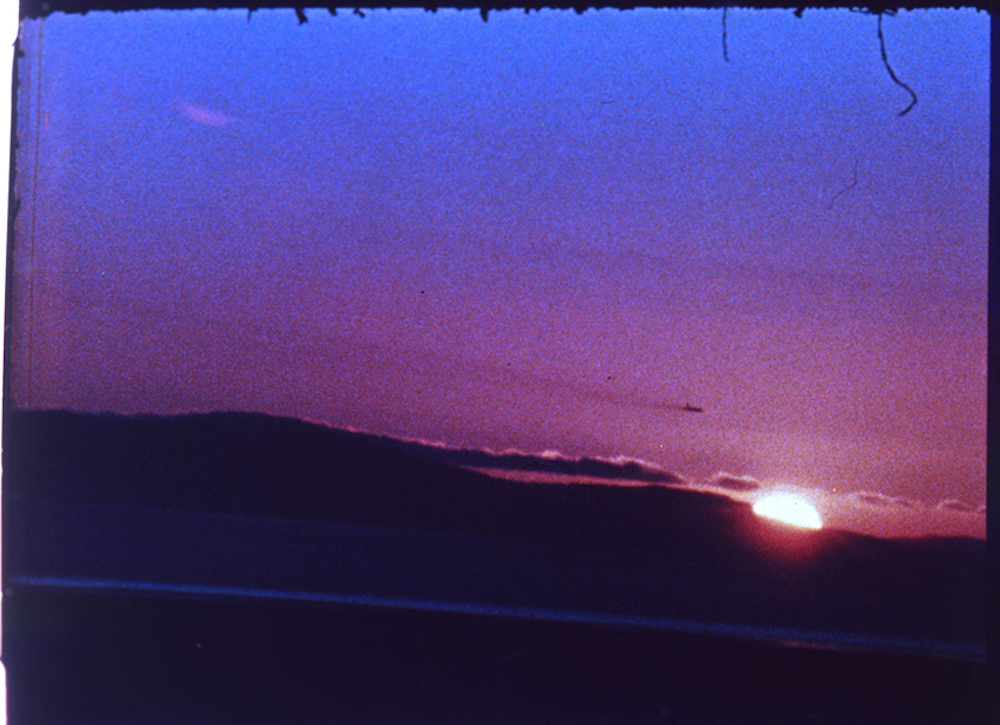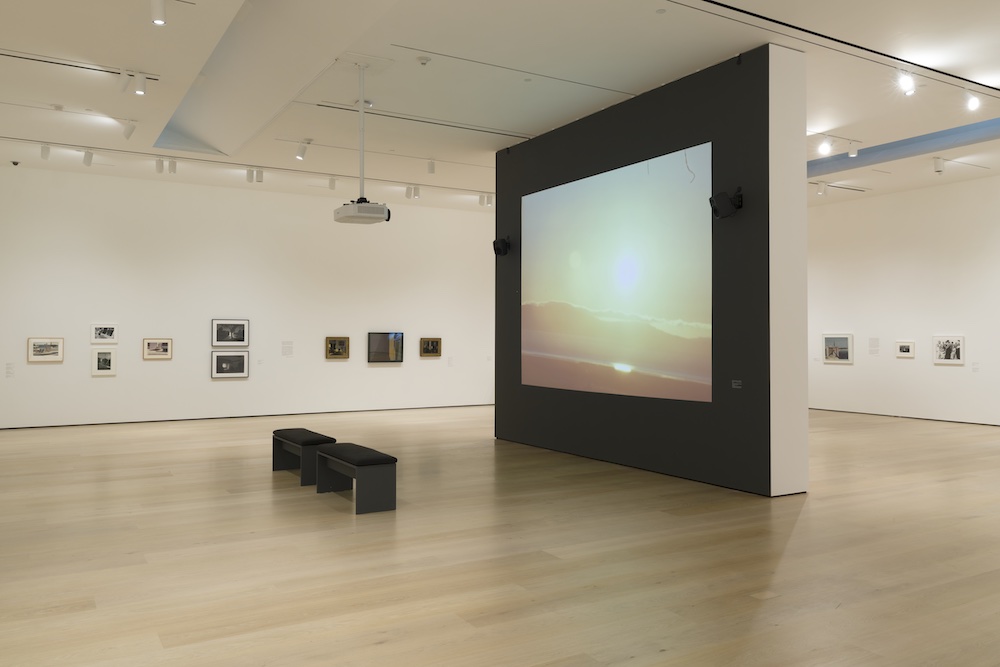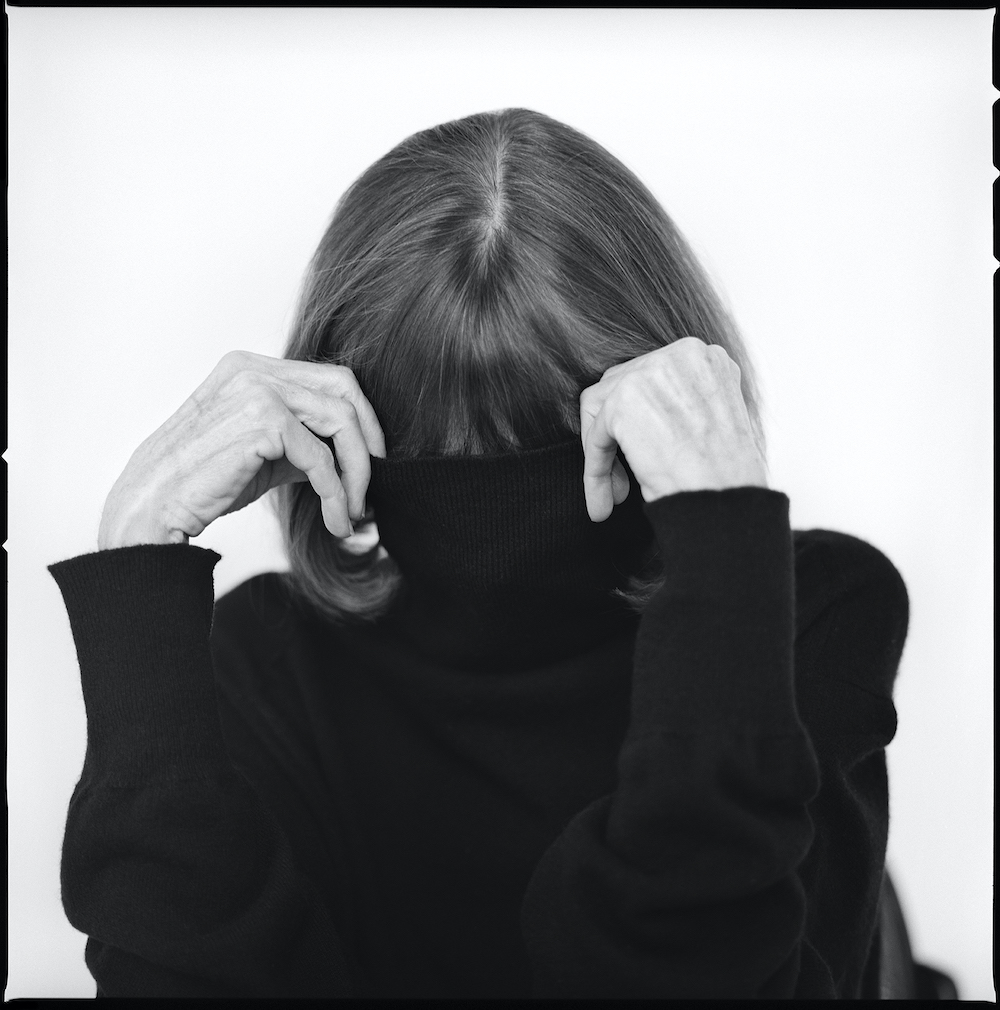In the late winter of 2019, I became enamored with Joan Didion. I and my then partner were driving the backroads of Tennessee and North Carolina as a leg of a cross country move from Portland to Philadelphia. Somewhere along our trip I picked up a copy of South and West—Didion’s notes on a road trip through the south—looking to find a sliver of kinship or a new perspective as I traveled East and North. I never did have the knack for the journaling—or rather, reflecting—that Didion did, but as I came across dilapidated churches with overgrown gravestones, hidden bars in dry counties that served whiskey in mouthwash cups, and the view from our camping spot overlooking the valleys of Gatlinburg (a view so idyllic I still question its reality), I did my best to take in the images as I thought she would: split seconds in the ceaseless film that could in some way, someday, explain something to me of life.

Andy Warhol, Reel of 77 (Four Stars) (“Sunset”), 1967. Courtesy of the Hammer Museum.
Explanations, or gestures towards them, are intrinsic to Didion’s oeuvre. She has built a career based on noticing, reflecting and attempting to form a narrative—if not for her reader than for herself. As she wrote in her 1979 book The White Album, “We tell ourselves stories in order to live…. We live entirely, especially if we are writers, by the imposition of a narrative line upon disparate images, by the ‘ideas’ with which we have learned to freeze the shifting phantasmagoria which is our actual experience” (The White Album, 11). For Didion, the seemingly singular temporal moment has become expansive, fleeting moments are forever engrained in the writer’s mind and pen.
Hilton Als’ exhibition “Joan Didion: What She Means” is a grasp towards Didion’s intentions, however ambiguous they can seem. The exhibition, separated into three large rooms, appears to take Didion as a moment of departure. Rather than creating an exhibition that functions as a reflection of her—”exhibitions as portraits” as Als calls them, referencing his past shows on Toni Morrison and James Baldwin—”What She Means” acts as a jumping off point. The layout of the exhibition is linear, tracing her oeuvre from her works on the early West, to the infamous helter-skelter of the 1960s, to her soul crushing yet elating works on death and grief. These blips in Didion’s—and America’s— history function almost as vignettes; moments that flow into the mind and leave traces that imply a future. The exhibition carries a whiff in the air; a moment amongst many.

“Joan Didion: What She Means,” installation view, 2022-2023. Courtesy of the Hammer Museum.
Whether this whiff is accessible to everyone is the question. In recent years, Didion has been called out for her presumed elitist and whitewashed perspective. I have neither the expertise nor the time to debate the merits of these claims, but I can say so much: The exhibition, however accurate a representation of Didion it may be, is not for the lay person. To walk through it even with an intensive dive into Didion’s works requires interrogation and self- reflection. Within the era specific rooms, the works adorning the walls have no explicit linear arrangement. The pieces adorning the walls (a mix of paintings, photographs, archival materials and the like) are presented alone or at times juxtaposed against a snippet from a Didion text that may or may not provide the unfamiliar with clarity amidst what at moments feels hurried and oddly-placed. How are we supposed to accept and appreciate the appearance of Betye Saar’s Mystic Chart for the Unemployed without considering Didion’s discussion of the fatalism of the 1960s? What good is a side by side of Kenneth Anger’s Invocation of My Spirit Brother and footage of Patty Hearst and the S.L.A. without being familiar with The White Album?
Als’ curative style is reflective of Didion, yet at points it falls short. We lose touch of the mind behind the media, the freezer of the phantasmagoria that is the exhibition. Is the show still worthwhile? Undoubtedly. If Didion’s legacy means anything, it’s to note where we are and then wait a while.


